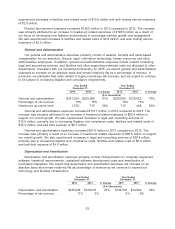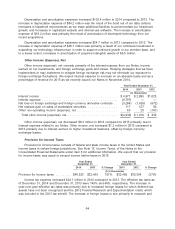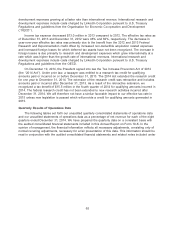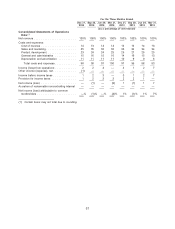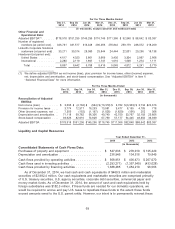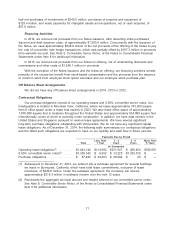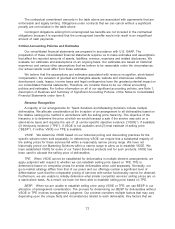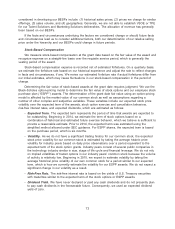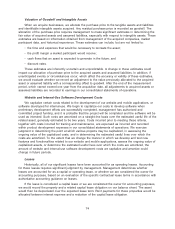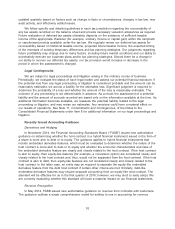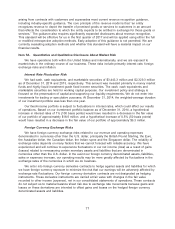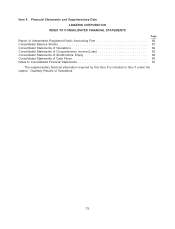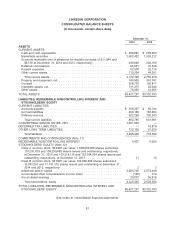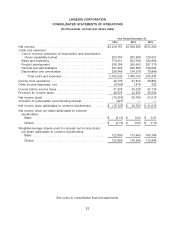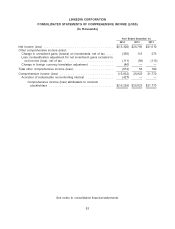LinkedIn 2014 Annual Report Download - page 75
Download and view the complete annual report
Please find page 75 of the 2014 LinkedIn annual report below. You can navigate through the pages in the report by either clicking on the pages listed below, or by using the keyword search tool below to find specific information within the annual report.considered in developing our BESPs include: (1) historical sales prices, (2) prices we charge for similar
offerings, (3) sales volume, and (4) geographies. Generally, we are not able to establish VSOE or TPE
for our Talent Solutions and Marketing Solutions deliverables. The allocation of revenue has generally
been based on our BESPs.
If the facts and circumstances underlying the factors we considered change or should future facts
and circumstances lead us to consider additional factors, both our determination of our relative selling
price under the hierarchy and our BESPs could change in future periods.
Stock-Based Compensation
We measure stock-based compensation at the grant date based on the fair value of the award and
recognize expense on a straight-line basis over the requisite service period, which is generally the
vesting period of the award.
Stock-based compensation expense is recorded net of estimated forfeitures. On a quarterly basis,
we estimate the forfeiture rate based on our historical experience and adjust the rate to reflect changes
in facts and circumstances, if any. We revise our estimated forfeiture rate if actual forfeitures differ from
our initial estimates, which may cause fluctuations in our stock-based compensation in the period of
change.
Determining the fair value of stock-based awards at the grant date requires judgment. We use the
Black-Scholes option-pricing model to determine the fair value of stock options and our employee stock
purchase plan (‘‘ESPP’’) awards. The determination of the grant date fair value using an option-pricing
model is affected by the market value of our common stock as well as assumptions regarding a
number of other complex and subjective variables. These variables include our expected stock price
volatility over the expected term of the awards, stock option exercise and cancellation behaviors,
risk-free interest rates, and expected dividends, which are estimated as follows:
•Expected Term. The expected term represents the period of time that awards are expected to
be outstanding. Beginning in 2014, we estimate the term of stock options based on a
combination of historical and estimated future exercise behavior, which we believe is sufficient to
provide a reasonable estimate. Prior to 2014, the expected term was estimated using the
simplified method allowed under SEC guidance. For ESPP shares, the expected term is based
on the purchase period, which is six months.
•Volatility. As we do not have a significant trading history for our common stock, the expected
stock price volatility for our common stock is estimated by taking the average historic price
volatility for industry peers based on daily price observations over a period equivalent to the
expected term of the stock option grants. Industry peers consist of several public companies in
the technology industry similar in size, stage of life cycle and financial leverage. We do not rely
on implied volatilities of traded options in our industry peers’ common stock because the volume
of activity is relatively low. Beginning in 2015, we expect to estimate volatility by taking the
average historical price volatility of our own common stock for a period similar to our expected
term, which is how we currently estimate the volatility for our ESPP awards. We do not expect a
significant change in our volatility as a result.
•Risk-Free Rate. The risk-free interest rate is based on the yields of U.S. Treasury securities
with maturities similar to the expected term of the stock options or ESPP awards.
•Dividend Yield. We have never declared or paid any cash dividends and do not presently plan
to pay cash dividends in the foreseeable future. Consequently, we used an expected dividend
yield of zero.
73


